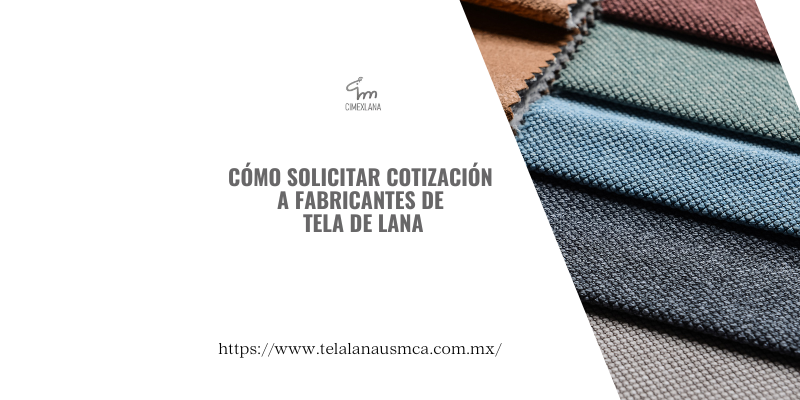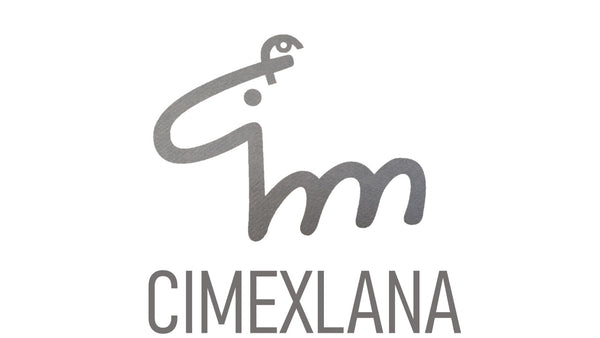
How to Request a Quote from Wool Fabric Manufacturers
How to Request a Quote from Wool Fabric Manufacturers
Requesting an effective quote is a key step when looking to purchase wool fabrics directly from manufacturers. This process may seem simple at first, but if not handled correctly, you could end up with incomplete or inaccurate information that won't allow you to make an informed decision.
In this article, you'll learn how to structure your RFQ to ensure you receive all the necessary information, saving time and ensuring clear communication with suppliers. We'll also cover key aspects to consider, from technical specifications to price comparisons and delivery times.
Why is a clear RFQ important?
Before we dive into the practical steps, it's critical to understand why writing a good RFP directly impacts the results of your purchase.
- Avoid mistakesA detailed application reduces the chances of misunderstandings with manufacturers.
- You get comparable data: Allows you to evaluate different offers objectively.
- You save time: Having all the information from the beginning speeds up final decisions.
- Build trust: Demonstrate professionalism and genuine interest to the supplier.
Now that you understand the importance, let's review how you can effectively write and structure your application.
Step-by-step structure for requesting a quote
1. Introduction
First impressions count, so your application should start with a brief but professional introduction.
- Introduce yourself and mention the name of your company or entity.
- State the purpose of your message, for example, “I am requesting a quote for wool fabrics for the manufacture of high-quality clothing.”
- Show interest and appreciation for their time and response.
Example:
"Hello,
My name is Juan Martínez, a representative of Textiles Andina. We are interested in purchasing wool fabrics for our upcoming winter collection and would like detailed information about your products.
2. Technical specifications
Be as detailed as possible when describing your needs. This allows the manufacturer to offer you a suitable quote. Include the following:
- Composition: Type of wool (merino wool, wool-cotton blend, etc.).
- Weight and thickness: For example, 200-300 g/m².
- Finish: You want the fabric to be light cut, fulled, etc.
- Colors or designs available or customized.
- Desired quantity in meters or yards.
Example:
“We're looking for 100% wool fabric, weighing 250 g/m², with a light-cut finish. We're interested in basic colors like black, gray, and beige. Initially, we'd need about 640 yards of each color.”
3. Key questions about the product
Be sure to include the necessary questions to complete your analysis. Some of the most important are:
- What is the price per meter/per yard?
- Is there a minimum order?
- Can you send samples?
Example:
"What are the prices per yard and what are the minimum order requirements? Is it possible to receive a sample for evaluation?"
4. Logistics and deadlines
Remember to ask about logistical details to avoid problems later.
- Delivery times from the order placement.
- Shipping options and associated costs.
- Return or exchange policy in case of defects.
Example:
“Please provide your estimated delivery times and shipping costs to the United States.”
5. Request for additional information
Take the opportunity to request catalogs, color charts, or other relevant documents. This can be helpful in narrowing down your options.
Example:
“We would appreciate it if you could share an updated catalog or any materials that would allow us to explore more options.”
6. Professional closure
End your request politely and leave the conversation open for any questions or follow-ups. Include your contact information at the end.
Example:
Thank you for your attention. I look forward to hearing from you. Please don't hesitate to contact me if you need more information about our needs.
Best regards,
Juan Martínez
Andean Textiles | juan.martinez@email.com | +56 9 8765 4321”
What to consider when evaluating responses
Once you start receiving quotes, carefully evaluate the following factors to make an informed decision:
- Quality vs. price: The cheapest option will not always be the best choice.
- References and reputation; research previous customer reviews.
- Flexibility for future customizations.
Create a comparison table to organize all the manufacturer information and make your analysis easier.
Ready to get started with your application?
Requesting a quote from wool fabric manufacturers doesn't have to be complicated. With a clear and detailed structure, you'll not only receive helpful answers but also optimize your purchasing process from the start.
If you'd like additional help connecting with the best suppliers and sourcing superior fabrics, don't hesitate to contact us. We're here to make your journey to the perfect fabric purchase easier.

